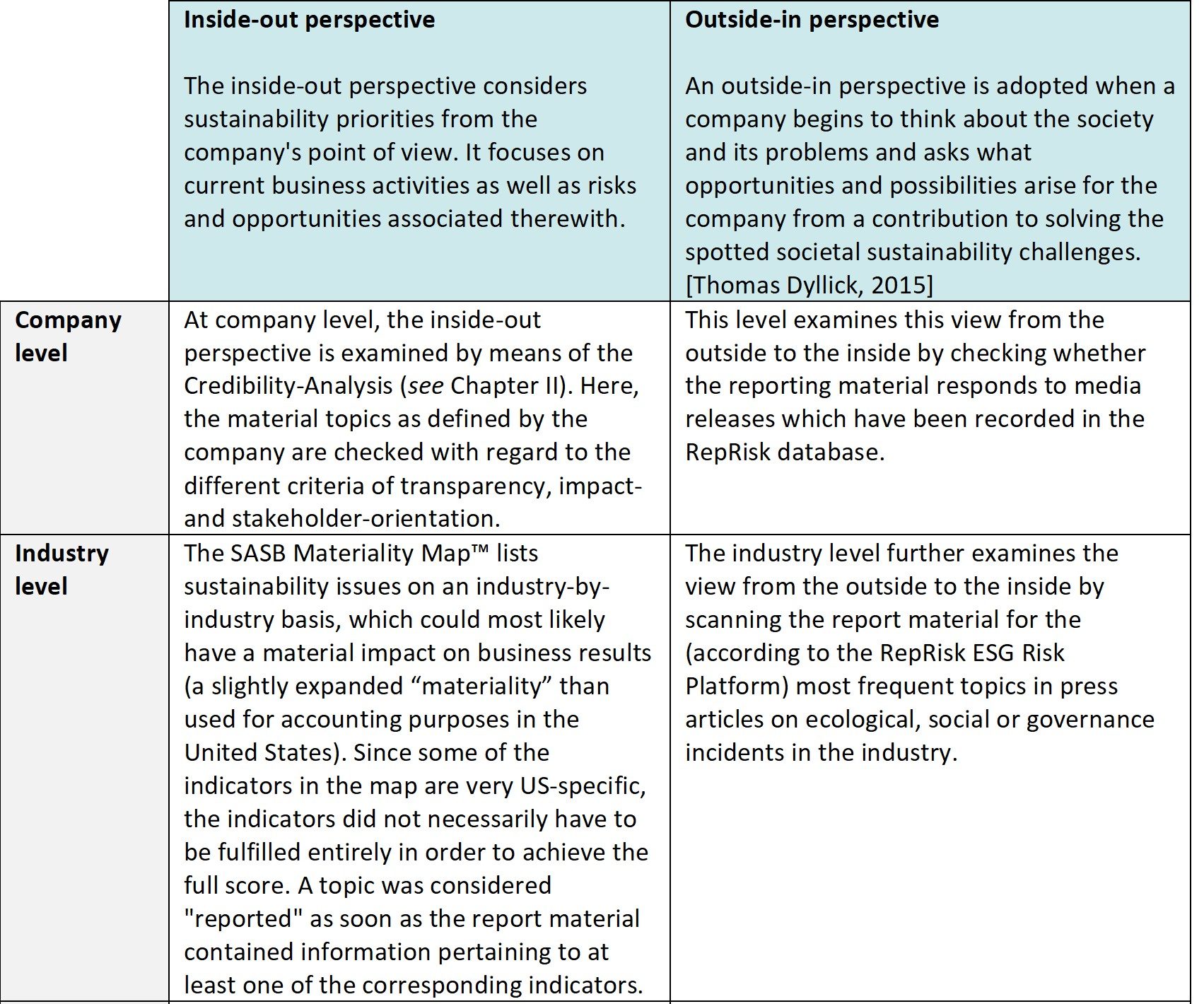Relevance
Methodology to analyse the relevance of sustainability prioritiesThe Relevance-Analysis checks whether the report material contains information on topics identified as relevant. As in the previous year, the identification of relevant sustainability issues was developed using the RepRisk ESG Risk Platform as well as the Materiality Map™ of the Sustainability Accounting Standards Board (SASB). To get an even more comprehensive picture, we also looked at whether companies report on their biggest global biodiversity risks and impacts, which were identified using the WWF Biodiversity Risk Filter for different industries. As a result, the company, industry and country level was analysed.
Company level
Critical press articles about the company, on environmental, social and governance issues (ESG), identified via the RepRisk ESG Risk Platform
Industry level
Material sustainability issues on an industry-by-industry basis, identified via the SASB Materiality Map™ and RepRisk ESG Risk Platform
International & Supply Chain level
Relevant international issues, identified via WWF Biodiversity Risk Filter, which highlights global biodiversity risks and impacts of specific industries
The analysis took into account the inside-out and outside-in perspective on the company and industry level.

At international & supply chain level: Analysis of biodiversity hotspots
The WWF Biodiversity Risk Filter is a tool developed to help companies and organizations assess and reduce the impact of their activities on biodiversity. The tool allows users to conduct a biodiversity risk assessment based on specific criteria such as location, type of activity, and potential impacts. In addition, the WWF Biodiversity Filter provides an overview for different industry sectors of all direct impacts on and dependencies on biodiversity. The Focused Reporting relevance analysis is based on the globally identified biodiversity risks (impacts and dependencies) for the respective industries of the companies studied.
